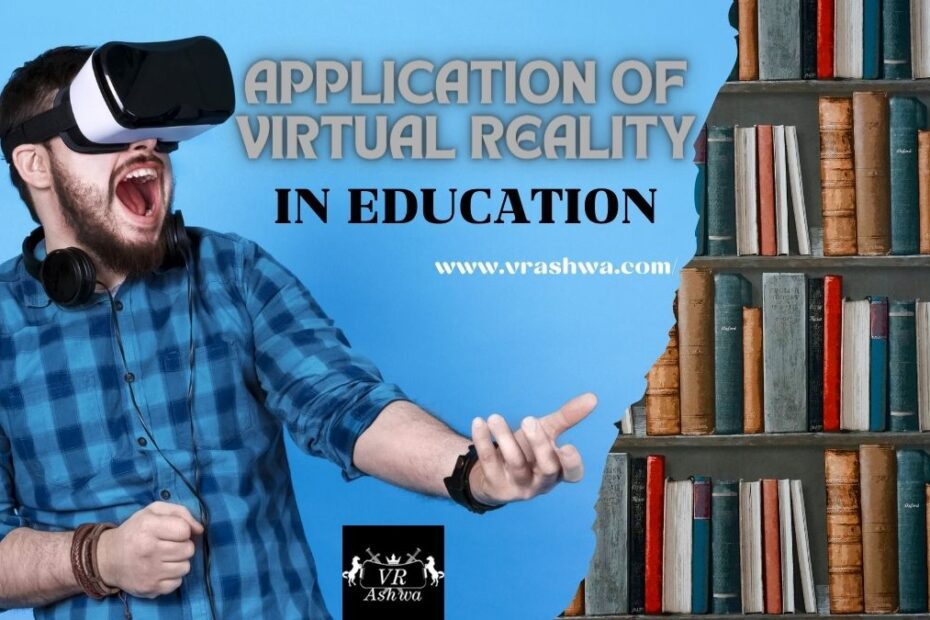Virtual Reality (VR) technology has opened up a new world of possibilities in the field of education and learning. VR learning is a method of teaching and training that leverages the immersive capabilities of VR technology to create engaging and interactive learning experiences.
In VR learning, students are placed in virtual environments where they can interact with digital content in a completely immersive manner. This allows for a more engaging and memorable learning experience, as opposed to traditional methods such as reading from a textbook or watching a lecture.
For example, in VR learning, students can explore virtual simulations of historical events, scientific phenomena, or even visit places that would otherwise be inaccessible. This makes learning more interesting and helps students retain information better. Additionally, VR learning can also help in developing practical skills, such as surgery simulations, military training, and other scenarios that are otherwise difficult to recreate in a real-world environment.
VR technology has the potential to revolutionize the field of education and learning by offering a more engaging and interactive learning experience. With its growing popularity and increasing affordability, VR learning is set to become an integral part of the educational landscape in the future.
How does virtual reality work in learning?
Virtual Reality (VR) technology works by creating a completely immersive digital environment that the user can interact with. In VR learning, this technology is leveraged to create engaging and interactive learning experiences.
The VR system consists of a headset, which the user wears, and sensors that track the user’s movements and head orientation. The headset displays the VR environment, and the sensors send data to the computer, allowing the VR environment to change in real-time as the user moves.
In VR learning, students are placed in virtual environments that are designed to mimic real-world scenarios, simulations, or other interactive experiences. These environments can include anything from historical events to scientific phenomena, and even abstract concepts.
The user interacts with the VR environment through controllers, which are often handheld devices that allow the user to interact with digital content in a natural and intuitive way. The user can pick up objects, move around the environment, and interact with digital content in a manner that mimics real-world interactions.
VR technology works by creating a completely immersive digital environment that the user can interact with. This technology is used in VR learning to create engaging and interactive learning experiences that allow students to explore virtual simulations and environments, helping them to understand and retain information better.
How can virtual reality improve education?
Virtual Reality (VR) technology has the potential to significantly improve the field of education by offering a more engaging and interactive learning experience. Here are a few ways in which VR technology can improve education:
- Improved engagement and retention: VR technology creates a completely immersive environment that students can interact with, making learning more interesting and engaging. This can lead to higher levels of student engagement and retention of information.
- Hands-on learning: VR technology allows students to engage in hands-on learning by interacting with digital content in a manner that mimics real-world interactions. This can be especially helpful for subjects that require hands-on learning, such as science, engineering, and design.
- Access to inaccessible places and experiences: VR technology can provide students with access to places and experiences that would otherwise be inaccessible, such as historical events, scientific phenomena, or even abstract concepts. This can make learning more interesting and memorable.
- Skill development: VR technology can be used to develop practical skills, such as surgery simulations, military training, and other scenarios that are difficult to recreate in a real-world environment.
- Personalized learning: VR technology can be used to create customized learning experiences that are tailored to the individual needs and learning styles of each student.
VR technology has the potential to greatly improve the field of education by offering a more engaging and interactive learning experience. By leveraging the immersive capabilities of VR technology, students can engage in hands-on learning, access inaccessible places and experiences, develop practical skills, and receive a personalized learning experience.
How can virtual reality help students?
Virtual Reality (VR) technology can greatly benefit students by providing them with an immersive and interactive learning experience. Here are a few ways in which VR technology can help students:
- Enhanced engagement and retention: VR technology creates a completely immersive environment that students can interact with, making learning more engaging and helping students retain information more effectively.
- Hands-on learning: VR technology allows students to engage in hands-on learning by interacting with digital content in a manner that mimics real-world interactions. This can be especially helpful for subjects that require hands-on learning, such as science, engineering, and design.
- Access to inaccessible places and experiences: VR technology can provide students with access to places and experiences that would otherwise be inaccessible, such as historical events, scientific phenomena, or even abstract concepts. This can make learning more interesting and memorable.
- Skill development: VR technology can be used to develop practical skills, such as surgery simulations, military training, and other scenarios that are difficult to recreate in a real-world environment.
- Personalized learning: VR technology can be used to create customized learning experiences that are tailored to the individual needs and learning styles of each student.
Conclusion
In conclusion, Virtual Reality (VR) technology is a powerful tool that has the potential to revolutionize the way students learn. VR technology provides students with an immersive and interactive learning experience that can enhance engagement and retention, enable hands-on learning, provide access to inaccessible places and experiences, develop practical skills, and offer personalized learning experiences. The use of VR technology in education has the potential to greatly benefit students and provide them with a more engaging and effective learning experience. As technology continues to advance, it will be exciting to see the many new and innovative ways in which VR technology will be utilized in the field of education.

